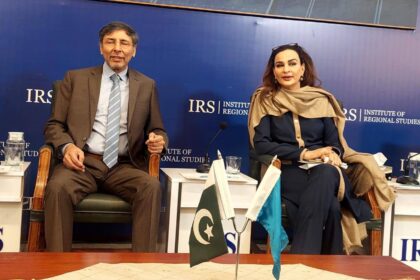**South Asia Urged to Fully Implement Child Rights Convention Amid Rampant Violations**
Despite all South Asian countries having signed the United Nations Convention on the Rights of the Child (UNCRC), experts warn that the region continues to fall short in protecting its 600 million children. Persistent issues such as child labor, early marriage, inadequate education, violence, and health inequities signal a glaring gap between international commitments and action, prompting urgent calls for meaningful enforcement and regional collaboration.
The UNCRC, adopted in 1989, outlines four main principles: non-discrimination, the child’s best interests, the right to life and development, and the right to participate. Afghanistan, Bangladesh, Bhutan, India, Maldives, Nepal, Pakistan, and Sri Lanka have ratified the convention, thereby pledging to uphold children’s civil, political, economic, social, and cultural rights. However, ratification alone has proven insufficient in ensuring protection on the ground, with millions of children continuing to be exploited, abused, and neglected.
**Critical Challenges Facing Children in South Asia**
Child labor remains widespread. According to the International Labour Organization, millions across the region work in hazardous conditions, including brick kilns, domestic service, and agriculture—despite legal restrictions. Pakistan alone is estimated to have 12 million child laborers, and the problem persists in India and elsewhere.
The region also has the world’s highest rate of child marriage, with nearly one in three girls married before the age of 18. This practice, in direct violation of the UNCRC, deprives girls of education, healthcare, and future opportunities, perpetuating cycles of poverty and gender inequality.
While enrollment in education has improved, millions of children still drop out before completing primary school. Quality remains particularly poor in rural and conflict-affected areas. Violence and exploitation—including domestic abuse, trafficking, and recruitment into armed groups—are common, especially in areas affected by conflict such as Afghanistan and parts of Pakistan. Marginalized and disadvantaged children face additional challenges, with disproportionately high rates of malnutrition, lack of sanitation, and limited access to healthcare.
**Barriers to Implementation**
Progress is hampered by several interlinked issues. Enforcement of child protection laws is inconsistent, with many legal systems described as slow, intimidating, and largely inaccessible to children. Protection services are often underfunded.
Deeply rooted cultural practices, poverty, and rigid social norms drive families to send their children to work or marry off daughters at a young age. Issues such as caste and gender discrimination remain widespread.
Political instability and conflict, especially in Afghanistan but also affecting other countries, compromise the delivery of basic services and reduce government accountability. Another key obstacle is the lack of child participation in decision-making processes, a right enshrined in the UNCRC but seldom realized in practice. Overall investment in child-focused health, welfare, and education services remains low, reflecting a broader lack of political will.
**Turning Promises Into Protection**
Experts and advocates recommend a holistic, multi-pronged approach to address these challenges:
– **Strengthen Institutions and Legal Frameworks:** Robust and properly enforced child protection laws are essential, supported by child-friendly legal systems and specialized agencies.
– **Eradicate Child Labor and Marriage:** Addressing root causes through awareness campaigns, vocational training, and targeted financial support can disrupt patterns of exploitation.
– **Invest in Health and Education:** Increased government funding for inclusive, high-quality services is critical, especially for girls and disabled children.
– **Engage Families and Communities:** Community-based initiatives and parenting programs can challenge harmful traditions and promote non-violent, gender-equal upbringing.
– **Empower Children:** Establish forums for young people to express their views and shape local policies, ensuring programs are responsive to their needs.
– **Improve Data and Accountability:** The collection of disaggregated data and the empowerment of independent oversight bodies are needed to accurately monitor progress and hold governments accountable.
**The Importance of Regional Cooperation**
Given the shared histories and challenges of South Asian countries, regional cooperation is vital. Collaborative mechanisms—perhaps under SAARC—could better address cross-border problems like child trafficking and migration, and facilitate the creation of joint standards and strategies through regional task forces or observatories.
**A Moral and Legal Imperative**
Ultimately, advocates stress that the UNCRC represents not just a legal obligation but a moral one. With children accounting for more than a third of South Asia’s population, neglecting their rights constitutes both a humanitarian and developmental crisis.
Meaningful change, rather than promises on paper, is essential. South Asia must urgently transform its commitments into concrete action—ensuring every child’s right to safety, education, and dignity—before another generation grows up underserved and unprotected. Failing children now, advocates warn, is tantamount to failing the region’s future.











